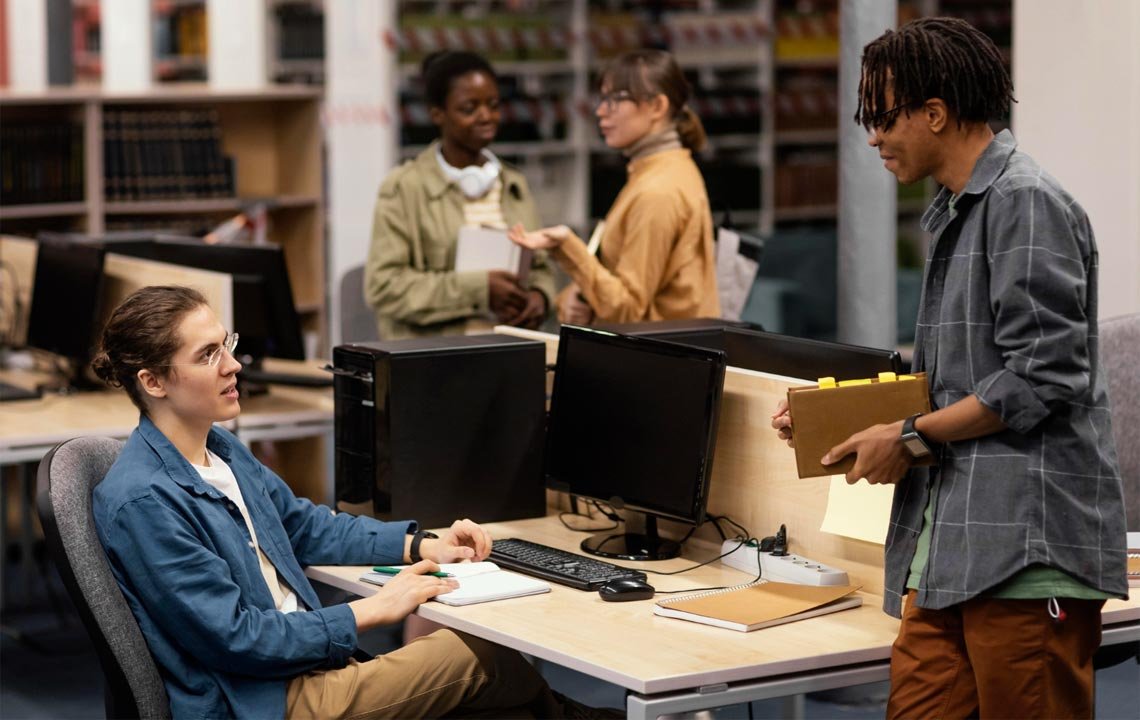“The most effective offices aren’t the ones with the most space. They’re the ones with the smartest systems.”
The modern workplace in the UK is no longer defined by cubicles, filing cabinets, and fixed hours. With the rise of hybrid work models, digital-first operations, and employee-focused design, UK businesses are rethinking how office spaces function on a daily basis.
Technology is the engine powering this transformation. It now plays a critical role not only in productivity but also in how people move through, interact with, and experience the workplace.
From smart energy systems to flexible desk booking tools and automated parcel management, today’s office is a highly orchestrated ecosystem of connected technologies. The goal is simple: streamline operations while creating a work environment that attracts and retains talent.
Smarter Spaces, Better Decisions
UK offices are undergoing an architectural shift. Design is no longer driven solely by aesthetics or square footage. It is informed by data. Smart sensors, IoT devices, and workplace analytics platforms help decision-makers understand how space is being used and where improvements can be made.
| Technology | Purpose |
| Occupancy sensors | Track real-time desk and room usage |
| Environmental monitors | Optimise lighting, air quality, and temperature |
| Integrated workplace apps | Allow staff to book spaces, request services, or report issues |
“Before we installed occupancy tracking, we thought we needed a bigger office. Turns out, we just needed better data,” shared the operations lead of a Bristol-based consultancy.
With utilities costs rising and sustainability targets looming, space optimisation is also tied to energy efficiency. Smart buildings can automatically adjust lighting and climate control based on usage patterns. This helps companies reduce their environmental impact without compromising comfort.
Rethinking Collaboration Tools
While Zoom and Teams have become staples of hybrid meetings, the technology supporting collaboration has continued to evolve. Offices are increasingly adopting:
- Interactive whiteboards and touchscreens in meeting rooms
- Acoustic zoning and sound masking for open-plan areas
- AI-powered scheduling assistants that find optimal meeting times and book spaces automatically
These tools are helping teams bridge the physical and digital divide. When combined with workplace platforms that manage access, AV equipment, and room configurations, the result is a more seamless collaborative experience across in-office and remote teams.
Deliveries, Digitised: The Modern Mailroom
One area often overlooked in tech transformations is the humble mailroom. Yet with a sharp rise in personal and business deliveries to offices, especially as hybrid staff have packages sent to their work address, the volume is becoming harder to manage manually.
Facilities teams are shifting to mailroom management software that tracks incoming deliveries, logs handovers, and alerts employees in real time. These systems reduce the burden on front desk staff and make it easier to trace packages, especially in multi-tenant or flexible workspace environments.
| Challenge | Manual Mailrooms | Digital Mailroom Systems |
| Lost or misplaced parcels | High | Low |
| Handover time | 3 to 10 minutes | Under 1 minute |
| Visibility for staff | Limited | Full delivery history |
| Employee notifications | Manual or absent | Instant alerts via app or email |
Solutions that support organised parcel tracking and internal delivery workflows are now seen as part of broader office automation strategies. Some platforms even integrate with building access control and employee directories to make the entire process seamless.
“We used to have a table full of unclaimed parcels. Now, every package is logged, and staff collect them within the hour,” said the facilities coordinator at a Manchester coworking hub.
Learn more about how tech solutions built for handling office deliveries are contributing to overall workplace efficiency.
Security, Access, and Control
Another critical area of workplace tech adoption is security. Offices are moving toward smart access systems that use mobile credentials, QR codes, or biometric authentication. This shift allows for flexible yet secure entry and exit, often integrated with time tracking and visitor logs.
Cloud-based access control also supports temporary credentials for guests or contractors. This helps companies maintain secure premises without creating bottlenecks at reception.
Additionally, smart CCTV and alarm integrations provide centralised monitoring across multiple sites. This gives security teams greater visibility and control, even with limited on-site staff.
Supporting Employee Well-being
Employee experience is now considered a core pillar of office design. Technology is helping organisations support well-being through:
- Mood lighting and circadian lighting systems
- Air quality monitoring linked to ventilation controls
- App-based access to amenities such as quiet rooms, wellness spaces, or fitness studios
These features are not just perks. They contribute directly to productivity and satisfaction. In fact, offices that offer wellness-focused features report higher employee engagement and retention rates.
“The office isn’t just a place to work anymore. It’s a place to connect, recharge, and be supported,” noted an HR manager from a tech firm in Leeds.
Final Thoughts
From smart lighting to mailroom tracking, UK offices are becoming smarter in ways that benefit both business operations and employee experience. The workplace is no longer just a container for people and desks. It is a platform where technology, comfort, and productivity converge.
Companies that invest in scalable workplace technology are not just future-proofing their operations. They are creating environments where people can do their best work, whether they are in the office three days a week or just passing through.
In the years ahead, it will not be the biggest or flashiest offices that thrive. It will be the ones that are most intelligently connected.


